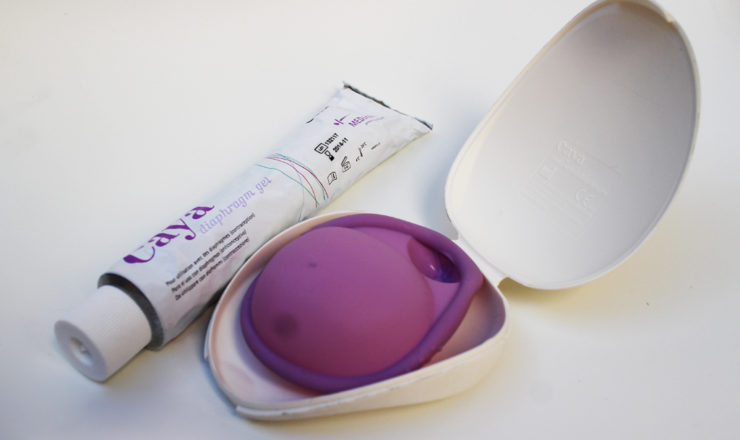Sterilization Methods
What are sterilization methods?
- Sterilization methods use surgical procedures to make you unable to get pregnant or get someone else pregnant. This means you are infertile.
- In people with ovaries*, sterilization is done through tubal ligation (sometimes called having your tubes tied).
- In people with testicles*, sterilization is done through a vasectomy.
- Although vasectomies can sometimes be reversed, both vasectomies and tubal ligations are meant for people who are certain that they do not want any (more) biological children.
How do sterilization methods prevent pregnancy?
- In order to get pregnant, sperm must enter your vagina**, swim up into your uterus and fertilize an egg that has been released from your ovaries into the fallopian tubes during ovulation.
- With tubal ligation, your fallopian tubes are sealed shut, preventing sperm from reaching an egg.
- In order to get someone pregnant, sperm in semen (cum) must enter your vagina.
- With vasectomy, the tube (vas defrens) that carries sperm from the testicles into your urethra is cut, preventing sperm from coming out of your penis** with semen during ejaculation.
How effective are sterilization methods?
- Both forms of sterilization are over 99.5% effective. This means that if 1000 sterilized people had vaginal sex for one year, only 5 people would get pregnant.
How do you use sterilization methods?
Tubal Ligation
- The procedure is done in a hospital, under general anesthetic which means you will be asleep.
- The most common method of tubal ligation is laparoscopy. A harmless gas is injected into your abdomen to inflate it, making it easier to see your internal organs. Tiny cuts are made in the abdomen and the fallopian tubes are either clipped or cut and sealed using a tiny camera and other small instruments.
- The procedure takes about 30 minutes. You can move around in about 8 hours and resume normal activities in a few days although physical exertion should be avoided for the first week.
- The procedure is effective immediately.
- Tubal ligation does not affect your menstrual cycle or your ability to enjoy sex.
- There are procedures called Essure and Adiana that are done through your vagina. A tiny device is inserted into each of the fallopian tubes causing growths to block the tubes over a 3 month period. Only local anesthetic is used. These procedures are currently not covered by OHIP and it is difficult to find a clinician who can do them. If you are interested, call the Bay Centre for Birth Control for more information (416-351-3700).
Vasectomy
- The procedure is done in a doctor’s office with a local anesthetic, which means you will be awake.
- A tiny cut or puncture is made into your scrotum (the sac that holds the testicles) using a scalpel blade or other instrument. The tubes (called vas deferens) which carry sperm from your testicles to your penis are cut and the ends are sealed.
- The procedure takes about 15 minutes. You can resume regular activities right away and recovery is very fast.
- You will still be able to get/maintain erections and ejaculate (cum) as usual after a vasectomy.
- It takes 3 months to be fully effective at preventing pregnancy. You need to use another birth control method during this time. After 3 months, a sperm count test is required to make sure the vasectomy is effective.
How to start using sterilization methods
Tubal Ligation
- Tubal ligations are performed by gynecologists. To see a gynecologist, you need a referral from your family doctor.
- A gynecologist will arrange for a tubal ligation in a hospital. There may be a 6-12 week wait time.
- Getting a tubal ligation may be possible shortly after or along with having a baby or having an abortion. Talk to your clinician.
- Tubal ligations are covered by OHIP. If you do not have an OHIP card, the procedure costs about $1500-2000.
Vasectomy
- Vasectomies can be performed by family doctors or by specialists, called urologists. To see a urologist, you need a referral from a family doctor.
- There are also clinics throughout Toronto that specialize in doing vasectomies. Most clinics do not require a referral, which means you can call them yourself to make an appointment.
- Vasectomies are covered by OHIP, although some clinics have additional fees. If you do not have an OHIP card, the procedure costs about $500-1000.
What are the side effects of sterilization methods?
Tubal Ligation
- For 2-5 days afterwards, you may experience tiredness, neck/shoulder pain, menstrual-like cramping and a swollen abdomen, from the gas used during the procedure.
- Side effects from the general anesthetic could last a few days. They include nausea and vomiting, confusion, and sore throat from the tube used to give the anesthetic.
- Rare side effects include infections, bleeding and possible damage to organs such as the bladder, bowel and uterus.
- In the rare case that a tubal ligation is unsuccessful, it can increase the risk of having an ectopic pregnancy.
Vasectomy
- You may experience pain and swelling for up to 2 weeks.
- Infection is possible but rare.
Advantages of sterilization methods
- They are permanent, one-time procedures.
- You don’t have to do anything before or after vaginal sex.
- Your partner(s) don’t have to be involved.
- There are no hormonal side effects. People who can’t or do not want to take hormonal birth control can be sterilized.
- Vasectomies are one of the few birth control options for people with testicles.
- Your sexual pleasure or performance won’t be impacted.
- They are both covered by OHIP, although vasectomies can come with additional fees.
Disadvantages of sterilization methods
- Reversal is expensive, difficult and sometimes impossible.
- With tubal ligation, you have to have surgery and be put under general anesthetic (put to sleep).
- It may be difficult to find a clinician who will perform a sterilization procedure on someone who is under 35 and/or who doesn’t have any children.
- For couples considering permanent methods to prevent pregnancy, clinicians will usually recommend vasectomy over tubal ligation as it is less invasive, cheaper and has a lower risk of complications.
For a downloadable resource on this topic, please visit Planned Parenthood Toronto Factsheet Database.
If you have questions about this topic, feel free to contact one of our peer educators. [Link]
*People with testicles are usually designated male at birth while people with ovaries are usually designated female at birth. We know that people with testicles don’t always identify as male and people with ovaries don’t always identify as female.
** We know that these aren’t the words everyone uses for their bodies (eg. trans folks), and support you using the language that feels best for you.
Last Edited: May 2020






